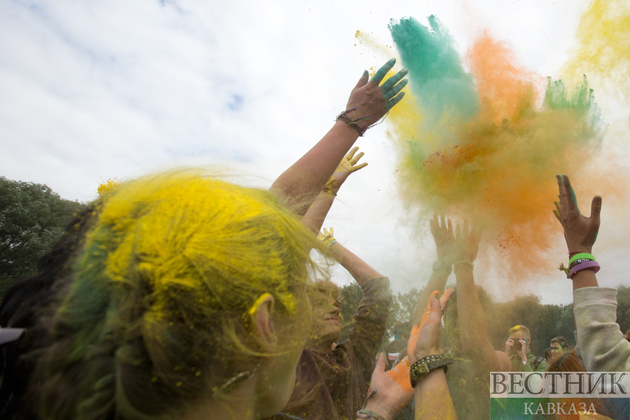Holi, the Hindu festival of colour, is now celebrated around the world, marked by raucous parties where people throw and smear coloured powder on each other. The festival, the celebrations for which will begin on March 8 in many parts of India, signifies the arrival of spring and, for many Hindus, the triumph of good over evil.
Held in March on the full moon night known as Phalgun Purnima in the Hindu calendar, the date changes slightly every year, The National News writes. While the first night in India is usually dedicated to more sombre rituals, it’s on the second day when the vibrant celebrations begin.
Myths associated with Holi
There are varying accounts of the festival’s origins but it has been celebrated in the Indian subcontinent for centuries, as documented in ancient Indian literature.
First myth
One of the most popular stories concerns the Hindu deity Vishnu and his devotee Prahlada. According to one version of this story, Prahlada was the son of an evil king named Hiranyakashipu, who demanded that everyone should worship only him. Prahlada refused to worship his father and instead continued to pray to Vishnu. Holika, Hiranyakashipu’s sister, grew angry at Prahlada because of his devotion to Vishnu and decided to kill him. She had been previously blessed by the gods so that she would not be harmed by fire, so she tricked Prahlada into sitting on her lap while she sat in a fire. Prahlada survived this ordeal because he prayed to Vishnu, while Holika perished. Holi, the name of the festival, is thus derived from the name Holika.
In different parts of India and Nepal, bonfires are lit on the first night of the festival to signify the demise of evil.

Second myth
Another story is linked to the god Krishna’s love for Radha, Jansari writes. Krishna’s skin was dark blue because a demoness had tried to poison him when he was a baby, and Krishna was worried that Radha wouldn’t like him because of his appearance. His mother, Yashoda, playfully suggested that he smear some brightly coloured powder on Radha’s face. After Krishna did this, Radha fell in love with him and they were later married.

Third myth
Some people also believe the Holi colours came from Krishna mischievously throwing coloured water on his subjects, which became part of the celebrations.

How Holi it celebrated?
In different parts of India, where it’s a national holiday, Holi is adapted to various cultures. In the state of Uttar Pradesh, for instance, women playfully hurl sticks at men, who use shields to protect themselves. In parts of Punjab, Holi fairs are held and can go on for days, while in the north-eastern state of Manipur, young people perform a group folk dance called thabal chongba on full moon night, and celebrations usually last for six days. The fun and games with colours, however, is used everywhere.
Holi is also a big festival in Nepal, where it is a national holiday.
Holi in the UAE
Holi celebrations have gone truly global, thanks to the Indian diaspora. Colour marathons, where participants are doused with coloured powders, have become popular around the world. Some critics, however, say these events destroy the religious significance of the festival. In the UAE, for example, the festival is usually marked by concerts and outdoor parties. Restaurants have also cashed in on festivities, launching special Holi menus and deals. A 12-hour Colour Beach Party will be held in both Abu Dhabi and Dubai, featuring top DJs from the UAE and India.
Abu Dhabi will host the party marathon first on March 4 at Al Raha Beach Hotel with a line-up that includes Bollywood's DJ Akbar Sami, DJ Tapeshwari, DJ B-Shek, DJ Dad and UAE DJs Tamanna, Atul, Dylan and Martin. In Dubai, the event will be held at held at North Beach, La Mer, on March 11. Performers at the event include Bollywood's DJ Aqeel, India's top-ranked female DJ Paroma and Dubai DJs Shadow, Zubair, Karan and Ziya. There will also be a special live performance by Punjabi singing sensation Kaka.






